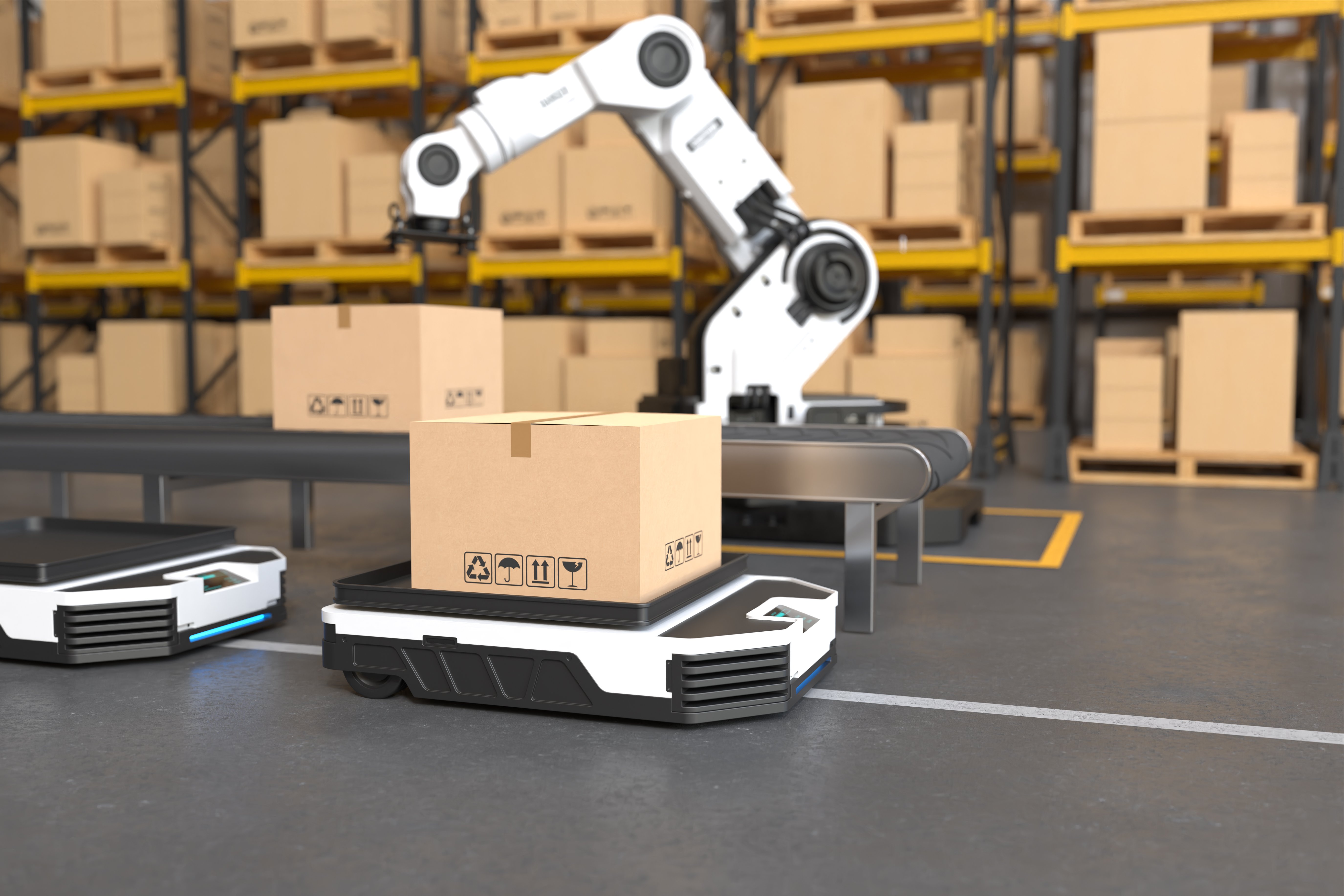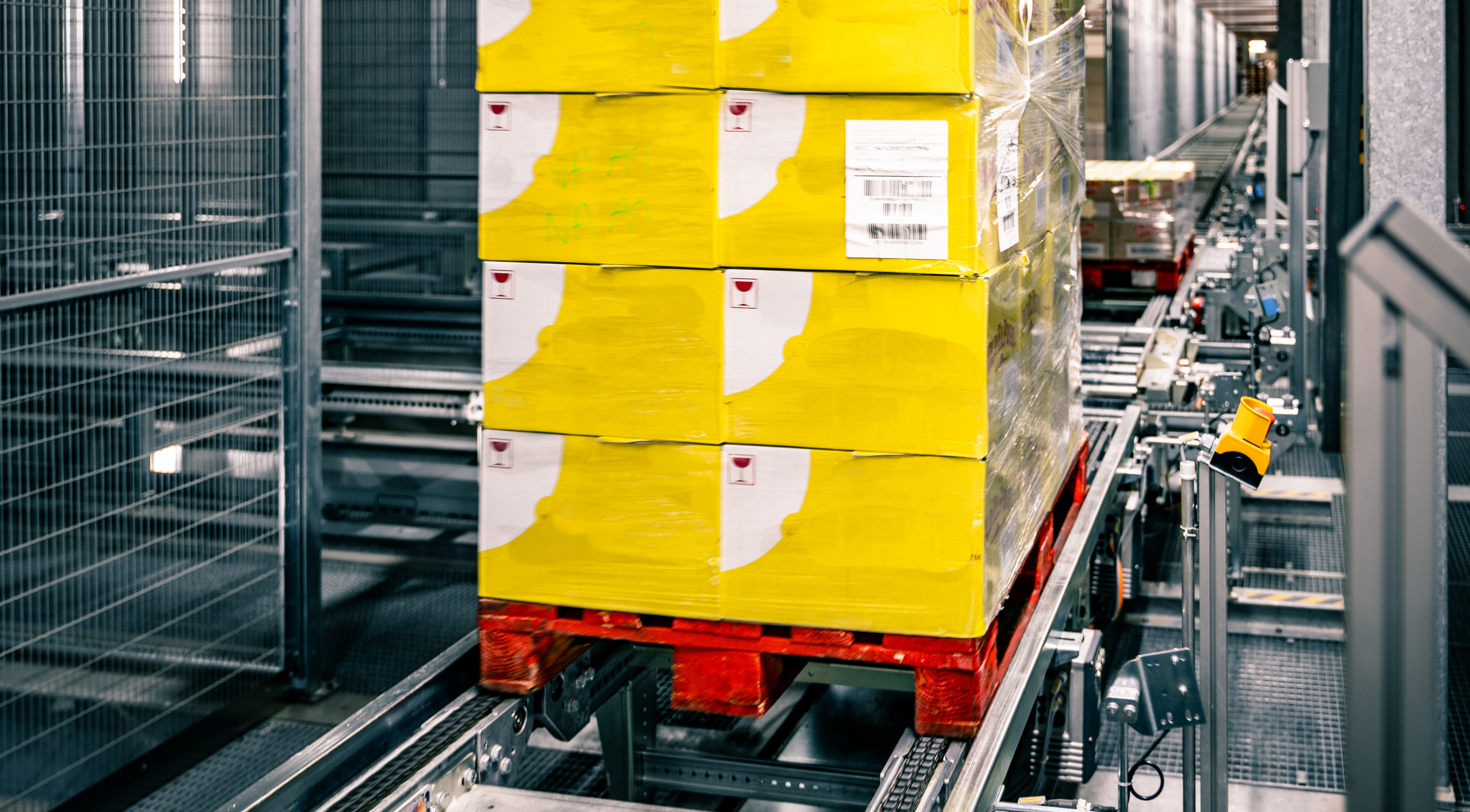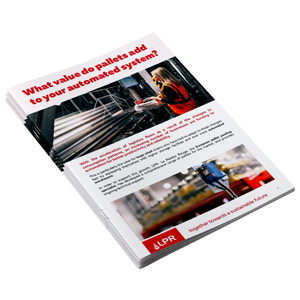Today, companies in the Fast Moving Consumer Goods (FMCG) sector are operating in an increasingly competitive environment, with demanding consumers who are constantly seeking higher quality services and faster deliveries.
The automation of logistics infrastructure has gradually become a major challenge for companies in the FMCG industry who are seeking to optimise their goods flow whilst also reducing their operational costs.
This trend has been further encouraged by the advent of new technologies that offer more efficient and innovative solutions.
Inspired by e-commerce giants such as Amazon, FMCG supply chain players are having to redouble their efforts to remain competitive.
In this article, discover the benefits of automating FMCG logistics infrastructure as well as the different solutions that you can implement in your supply chain.
Menu:
1 | 5 reasons to automate your supply chain
2 | The different solutons for automating supply chain infrastructures
3 | FMCG supply chain automation: new challenges to overcome
1. 5 reasons to automate your supply chain
1.1. Improve the overall efficiency of your supply chain
While it is true that the initial cost of automated infrastructure is often high, it is a profitable long-term investment that reduces costs related to:
-
Labour: Robotics can allow you to replace certain manual tasks, freeing up your workforce to focus on higher-value operations.
-
Human error: Choosing automation means reducing interruptions in your supply chain, like with predictive maintenance, for example.
-
Inventory management: You can optimise the storage of your goods through a Warehouse Management System (WMS) software that will allow you to coordinate, control, and streamline the various flows circulating in your warehouses.
-
Planning: Improve the management of your logistics flows by analysing data collected by artificial intelligence or by using Integrated Management Software (IMS) to visualise and optimise all the steps that make up your production chain.
1.2. Increased productivity
Automation allows you to eliminate many of the manual tasks that have low added value.
This way, your employees can concentrate on more complex tasks and your company benefits from greater added value.
1.3. Increase the quality of your production
Not only can you increase your productivity, but you can also improve the quality of your products!
In fact, by implementing repeatable automated processes, you reduce the risk of errors and manufacturing defects.
As a result, your production is faster and more reliable.
1.4. Keep tabs on your products
The traceability of your products can be improved thanks to precise and tailor-made automation, which allows better inventory management and faster identification of quality issues.
1.5. Increased flexibility
By automating your infrastructure, you improve the overall flexibility of your supply chain.
You become better equipped to manage variations in demand by making changes to your production processes.
As a result, you become more reactive to fluctuations in market activity and can make changes more quickly.
2. The different solutions for automating supply chain infrastructures
Managing the supply chain of Fast Moving Consumer Goods is a complex task that involves the coordination of many stakeholders, from production to delivery.
Automating every step of your supply chain can help you optimise your processes and improve your end-to-end visibility, leading to greater overall operational efficiency and improved customer satisfaction.
For each step, here are some of the different automation solutions that you can adopt.
2.1. Automate production
When automating production, various tools can be implemented. Here are some examples:
-
Manufacturing robots: Robots can be used to automate tasks such as assembly, loading and unloading, sorting, and packaging. Robots can operate 24 hours a day, 7 days a week without dips in performance or any interruption, dramatically increasing your production efficiency.
-
Automated conveyor systems: Automated conveyor systems (such as conveyor belts or pallet racks) can be used to transport goods between different points of your production facility, with the aim of reducing downtime.
-
RFID chips: RFID chips are a traceability system that can be used to track products throughout your supply chain (from production to delivery). They help to improve visibility and the accuracy of information about your inventory status and process efficiency.
-
Predictive maintenance systems: These systems are equipped with sensors that monitor the condition of your machines in real-time, allowing for predictive maintenance and preventing breakdowns.
-
Artificial intelligence: Artificial intelligence collects and analyses all your production data in real-time to help improve your manufacturing processes.
2.2. Automate warehousing
If you want to automate the management of your company's warehouses, the best solution is to use a Warehouse Management System (WMS).
A warehouse management system is a supply chain automation solution that allows for more efficient management of inventory, product movements, and shipping. It represents a significant performance gain.
These systems have many advantages: they allow you to optimise your storage capacity and reduce order processing time, and they can also help to reduce storage errors and labour costs associated with inventory management.
Amazon is one of the first companies to adopt WMS to manage its distribution centres, which allows them to store more products and process a higher number of orders in less time.
2.3. Automate order preparation
It is also possible to automate the preparation of your orders! To do this, you can use "picking" robots.
These machines present several advantages for your supply chain:
-
A reduction in labour costs
-
Increased precision
-
Increased productivity
However, it may be that you aren’t able to, or don’t want to, fully automate the preparation of your orders. You can instead choose a hybrid solution and opt for collaborative robotics.
Collaborative robotics allows humans and robots to work together, with robots only being responsible for handling or sorting tasks.
Handling robots can move pallets or boxes, while sorting robots can sort packages according to their destination. Human operators, on the other hand, can focus on higher value-added tasks instead.
Collaborative robotics improves productivity while reducing the risks of accidents related to the handling of heavy or dangerous loads.

3. FMCG supply chain automation: new challenges to overcome
3.1. A long-term investment
As mentioned at the beginning of this article, automating the supply chain for the FMCG industry can be a costly endeavour in terms of investment and implementation.
The technologies needed, such as robots or planning software, are expensive to install and maintain.
Nevertheless, this type of investment allows you to make your supply chain more efficient, and in the long run, to save money on all the items that make it up (reduced labour costs, reduced storage, and maintenance costs, for example).
Investing in automation is a long-term investment, and ensures better productivity and profitability for your supply chain.
3.2. Training your teams
The transition to automating your supply chain involves training your teams.
Your employees need to have the necessary resources to learn how to use the new technologies installed on your supply chain.
This is an essential step to help them to adapt to their new roles and work tools, as well as to ensure the increased performance of your supply chain.
3.3. Security: deploying new infrastructures
Rules and practices regarding safety will need to change to accommodate the automated equipment you install.
You will need to deploy new measures that ensure the correct monitoring of your equipment and the protection of your supply chain.
To help with this, several solutions are available to you:
-
Invest in robust security systems to protect your new automation technologies.
-
Implement regular verification and predictive maintenance processes to ensure that your technologies are always in good working order.
-
Train your staff to recognise and prevent attacks from cybercriminals.
Conclusion
In conclusion, the automation of the supply chain of an FMCG company comes at a cost, but it is a significant strategic choice that can greatly increase profitability.
Despite this, the automation of logistics infrastructures has many advantages for supply chain companies.
It allows for the optimisation of goods flows, the reduction of operational costs, the improvement of productivity, and increased safety through various solutions such as:
-
automated conveying,
-
robotics (collaborative or not),
-
stock and warehouse management solutions,
-
RFID traceability solutions,
-
or even artificial intelligence.
We’d be happy to help you find the most adapted solution for your automated supply chain.



